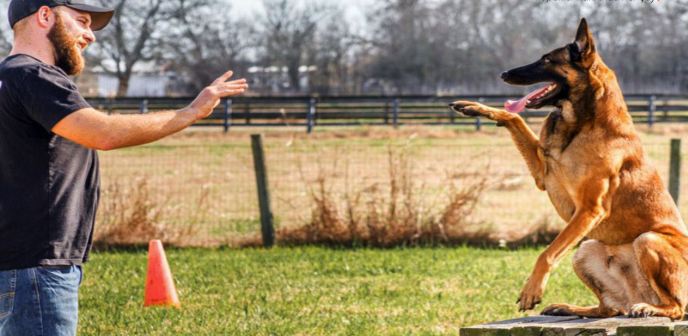
Training is an essential aspect of responsible dog ownership. Proper training not only improves your dog’s behavior but also strengthens the bond between you and your furry companion. This guide explores effective and humane training methods for dogs, focusing on positive reinforcement and other proven techniques.
1. Positive Reinforcement Training
What It Is: Positive reinforcement involves rewarding desired behaviors to encourage their repetition. Rewards can include treats, praise, toys, or playtime.
How It Works:
- Immediate rewards: Reward your dog immediately after the desired behavior to help them associate the action with the reward.
- Consistency: Use the same commands and rewards consistently to avoid confusion.
- Gradual progression: Start with frequent rewards and gradually reduce them as your dog masters the behavior.
Benefits:
- Builds trust and strengthens the bond between you and your dog.
- Encourages a positive learning environment.
- Reduces the likelihood of fear or stress in your dog.
2. Clicker Training
What It Is: Clicker training is a subset of positive reinforcement that uses a small device (the clicker) to mark desired behaviors with a distinct sound.
How It Works:
- Introduce the clicker: Pair the click sound with a treat so your dog learns to associate the click with a reward.
- Mark behaviors: Click immediately when your dog performs the desired behavior.
- Reinforce commands: Use the clicker alongside verbal commands to strengthen their association.
Benefits:
- Precise communication with your dog.
- Clear and consistent feedback for quicker learning.
3. Crate Training
What It Is: Crate training teaches your dog to see their crate as a safe and comfortable space.
How It Works:
- Introduce the crate positively: Make the crate inviting with bedding, toys, and treats.
- Gradual acclimation: Start with short periods in the crate and gradually increase the duration.
- Use for specific purposes: Utilize the crate for housetraining, travel, or as a retreat during stressful situations.
Benefits:
- Aids in housetraining by teaching bladder and bowel control.
- Provides a safe space for your dog.
- Prevents destructive behaviors when unsupervised.
4. Leash Training
What It Is: Leash training ensures your dog walks calmly on a leash without pulling or lagging behind.
How It Works:
- Start indoors: Practice walking on a leash in a distraction-free environment before heading outside.
- Use positive reinforcement: Reward your dog for walking calmly by your side.
- Redirect pulling: Stop walking when your dog pulls and resume only when they return to your side.
Benefits:
- Makes walks enjoyable and stress-free.
- Ensures the safety of both you and your dog in public spaces.
5. Socialization
What It Is: Socialization involves exposing your dog to various environments, people, and other animals to build confidence and reduce fear.
How It Works:
- Early exposure: Begin socialization during the critical period (3-14 weeks of age) if possible.
- Controlled interactions: Introduce your dog to new experiences gradually and positively.
- Reinforce calm behavior: Reward your dog for remaining calm and relaxed in new situations.
Benefits:
- Reduces fear and aggression toward unfamiliar stimuli.
- Encourages adaptability in different environments.
- Promotes overall well-being and confidence.
6. Obedience Training
What It Is: Obedience training teaches your dog basic commands such as “sit,” “stay,” “come,” and “leave it.”
How It Works:
- Start simple: Begin with one command at a time in a distraction-free environment.
- Repetition and consistency: Practice commands daily to reinforce learning.
- Increase difficulty gradually: Add distractions and practice in different environments as your dog improves.
Benefits:
- Enhances communication and control.
- Improves safety for your dog and others.
- Builds a well-mannered and obedient companion.
7. Avoiding Punitive Methods
Why It Matters: Punitive methods, such as yelling or physical punishment, can cause fear, stress, and aggression in dogs. They may also damage the bond between you and your pet.
What to Do Instead:
- Focus on rewarding positive behaviors rather than punishing undesirable ones.
- Redirect unwanted behaviors and provide alternatives.
- Be patient and empathetic, understanding that learning takes time.
Conclusion
Effective training methods rely on patience, consistency, and positive reinforcement. By using humane and proven techniques, you can raise a well-behaved and happy dog while fostering a deep and lasting bond. Remember, every dog is unique, so tailor your training approach to suit their individual needs and personality.

